This is my serialized story of walking the Camino de Santiago across Northern Spain with my sister-in-law. If you’d like to start at the beginning, click here.
A morning “Slog” - that’s how my guidebook describes the start of our day: a ten-mile hike across the Meseta without a town, dwelling, church, or tree to provide relief from the sun. The night before, in Carrion with all of its grocery stores and pharmacies, we stock up on ibuprofen, water and fruit and, now, with my feet tightly wrapped in my boots, we are ready - god willing - for our ordeal.
With a quick prayer, Marlene and I depart from our hostel at 6 AM hoping to remove the afternoon sun from the equation. Shortly thereafter, we walk out of Carrion, our oasis of a town - where Marlene purchased new hiking sticks and I bought a compact raincoat (given how much I hated my blue whale of a poncho) - to continue our pilgrimage across Northern Spain.
Earlier this morning, I filled my Camelbak in the back of my backpack with water. Normally, I don’t worry about it too much, but for our ten-mile hike today without conveniences, it made sense. In addition, I am carrying two extra bottles of water - as is Marlene - as our guide books have spooked us into believing this is not the day to run out of water. Our goal, though, is only fourteen miles away where we have a room reserved in the tiny town of Ledigos. We would have liked to walk further, but the hostels at our preferred destination were all booked. Both Marlene, my rock-star sister-in-law who handles all of our bookings, and I agree that a shorter hike today is a-okay, even if it comes with the cost of walking further tomorrow.
Leaving Carrion is significant as we recognize we are saying good-bye to civilization for another multi-day hike across the high chaparral. This is what we expected in reaching the Meseta, of course, and now we are totally in the throes of the vast plateau. We are still four days out from Leon, the last of our major cities before reaching our destination of Santiago, at least two weeks away.

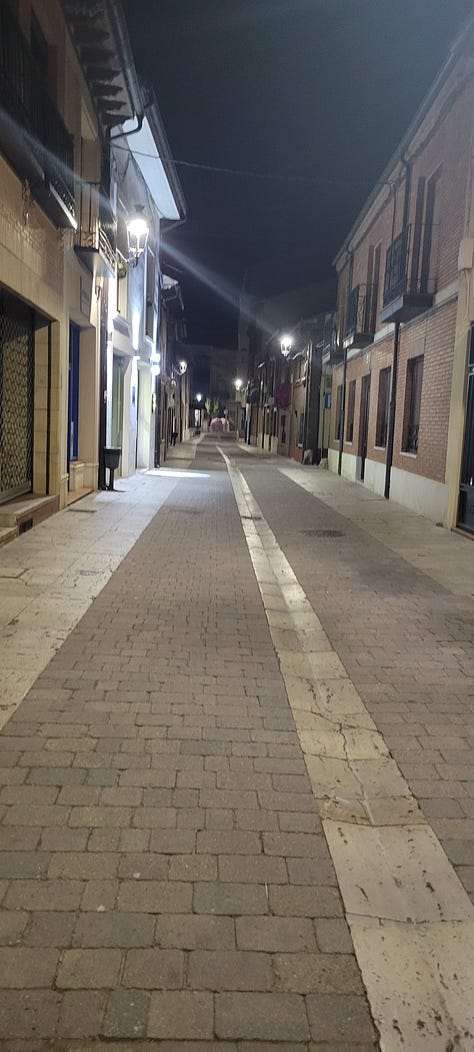
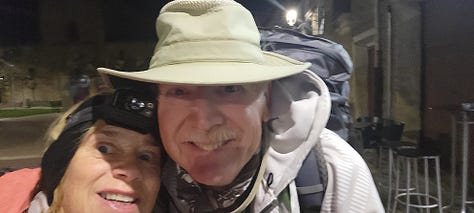

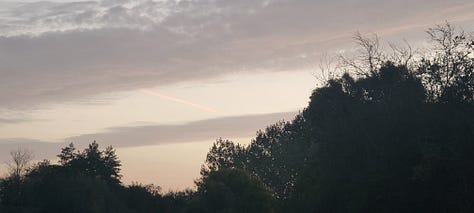


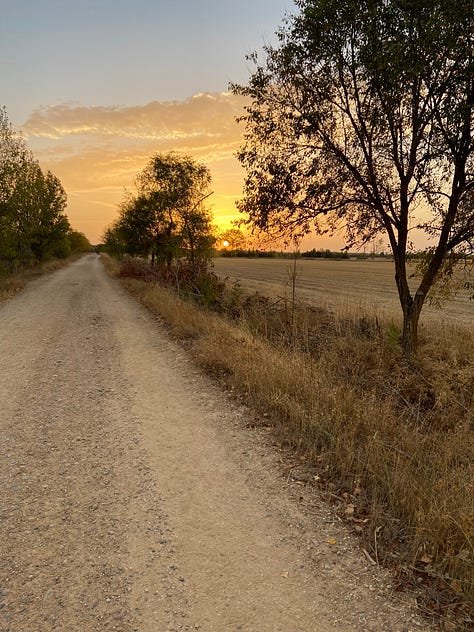
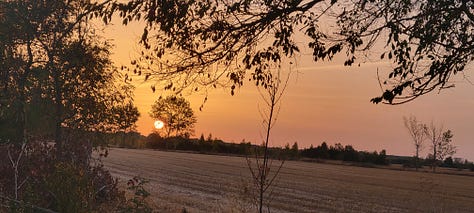
The road stays straight and we focus on our walking mantra of “one stick, one step, one stone” in traversing the old Roman road consisting of set stone, which offers no thrills and frequently delivers sharp pains from pointed edges of embedded rock up through our shoes. A steady breeze keeps us cool, though, and the time goes quickly. We actually are used to mornings without eating - at least until we are well on our way - and for all the warnings we have been given about this morning, this hike, in truth, proves no different than the others we have walked. All the food and extra water we are carrying seems a little unnecessary.
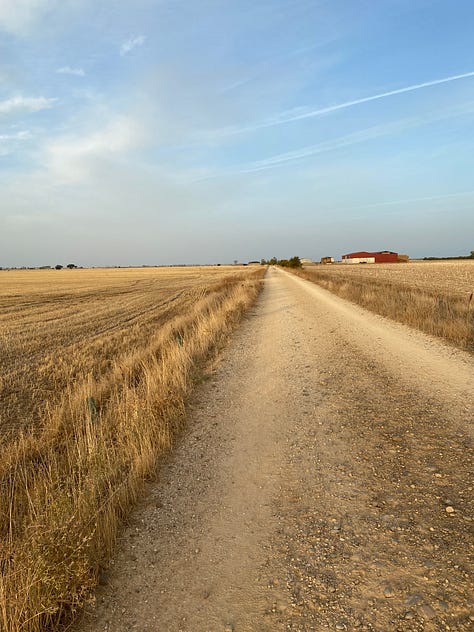
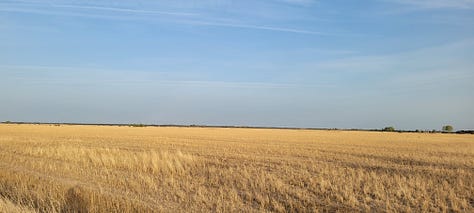
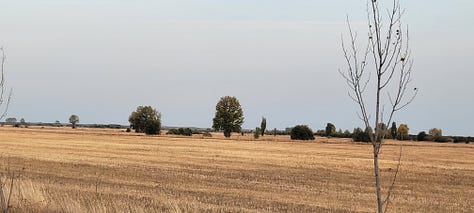


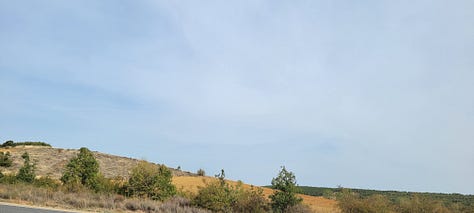

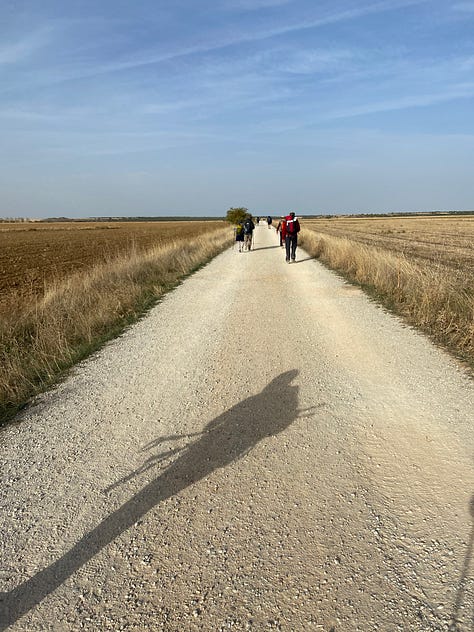
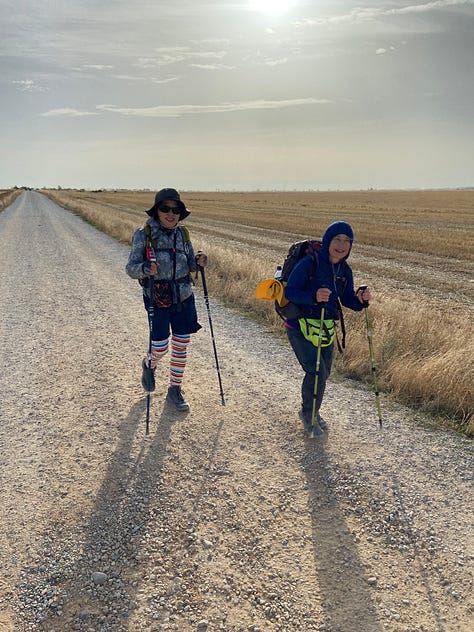
A food truck six miles into our journey provides some refreshments. We don’t stop, but we can see many other pilgrims taking a break in the “collective” ten-mile push to the next town. This, of course, is crazy. The food truck is listed in our guidebooks as a temporary way station available to us, yet our books are two years old. Is this truck really “temporary” or, once again, are the hidden Camino “powers-that-be” making sure each hardship isn’t too hard, given the number of pilgrims (in all shapes and sizes and health conditions) walking the Camino?

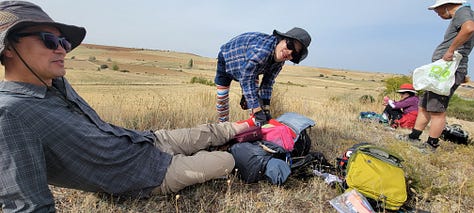


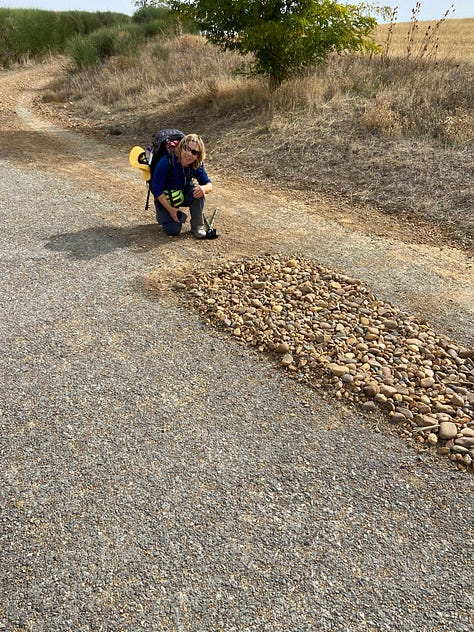
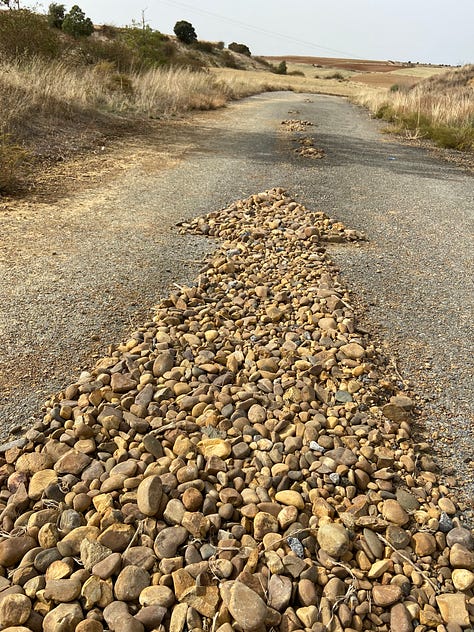

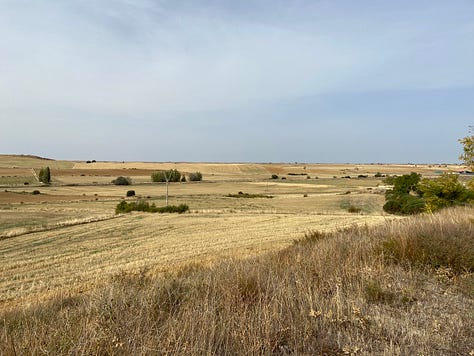

At the end of our three-hour “slog,” like at the end of an endurance race, we come down a final slope and cross the proverbial finish line where an outdoor cafe awaits at the bottom of the hill in the town of Calzadilla de La Cruez. We can see pilgrims resting, drinking sodas and beer, and sitting at tables and on the sidewalk in shade of a small cluster of buildings free of their backpacks. We, too, rest like the others, and in addition to drinking orange soda and eating a small bag of chips in the rising heat, we use the time to take off our boots and change out of our sweaty socks. Both of us laugh at the amount of extra water we will be carrying the rest of the day.
As I lace up my boots, once more, it’s nice seeing Simon, Alisa, and Claudia coming down the hill. They join us for a few minutes in the shade, drinking water and sharing a baguette between them. Before long, we wish them a “Bien Camino” and continue on our journey, following the Camino signs through the town, which appears to be empty of stores and inhabitants.
We have an easy four-mile hike to the village of Ledigos. As we walk, we meet a Canadian couple who are hiking hand-in-hand. They’re from Saskatchewan and say they have been married for more than thirty years. To me, such closeness is a visual definition of serenity - not only within themselves but with their relationship with each other. I am not sure I am prepared to be that serene and don’t offer my hand to Marlene. Still, they say they have heard of us, we are known on the Camino as the couple who are not a couple.
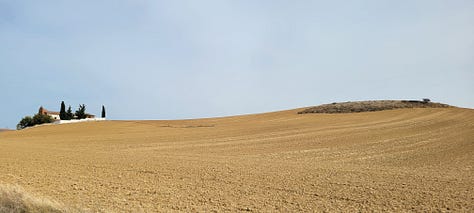
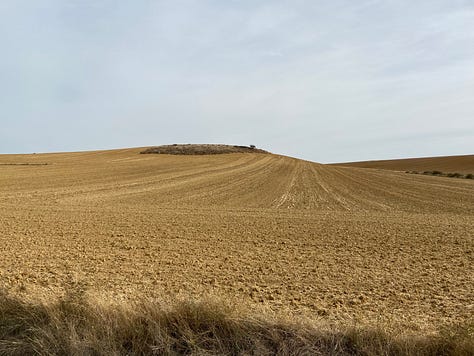
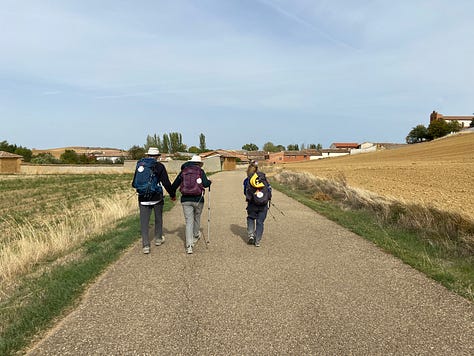
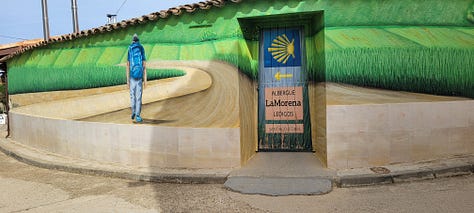
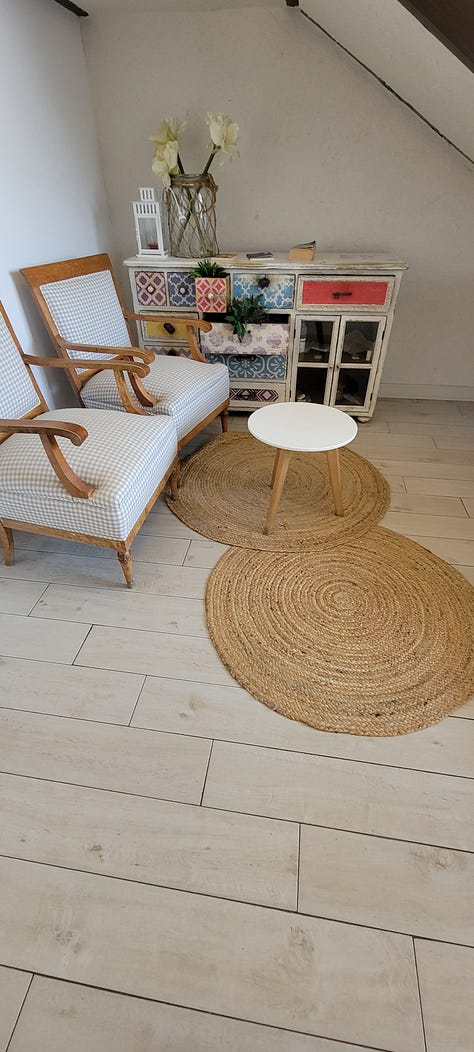
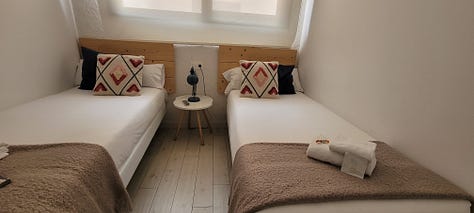


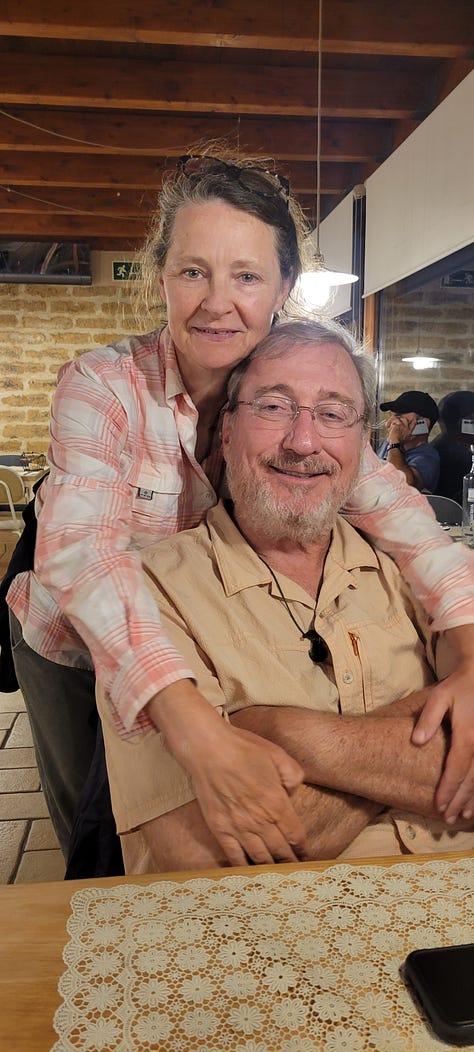
By early afternoon we are happily ensconced in a private room with two single beds at our hostel in Ledigos. The husband and wife proprietors allow us to use their washer and dryer and as dirty as our clothes have become out on the Meseta, we are extremely grateful for the opportunity to clean up our “act.”
Lying on our beds after showers, wearing the last of our clean clothes while all of our other clothes are in the washer and dryer, Marlene asks what my guidebook has to say about things to do in Ledigos. I look over and can see she is dog-tired and ready to fall asleep. With our windows open, the breeze is nice and soothing, but the room is is still hot. I say, “There’s nothing to do in Ledigos. My book says, ‘sleep.’“
So we both take naps. Ledigos has been perfectly described!
That evening, before the traditional 7 PM pilgrim’s dinner, Marlene and I walk around the village to enjoy the setting sun and notice, once again, the empty buildings. To us, it’s clear that the hostels in Ledigos are the only businesses thriving. Clearly, on the Meseta, we have entered a world where the smaller towns simply exist to serve pilgrims. Otherwise, the towns emptied years ago - not only of men, who usually are the first to leave to seek employment in the cities, but by now, of the women and children and grandparents too.
Still, in thinking positively, hiking the Meseta has brought us closer to other pilgrims. We may be on our own out here in the vastness of the plateau, but we have each other as we walk long empty stretches to the distant horizon and getting to know our fellow pilgrims and hearing each others’ stories seem inevitable - either on the trail or in being together in the hostels at night.
Surprising to us, our hostel feeds more than forty pilgrims that night in its large dining room. We all are offered a meal of three courses: lentil soup, chicken and rice, and an ice cream bar for dessert. Being vegan, I pick around the chicken, but love the lentil soup. (Lentils being the closest thing to vegetables as far as I can see.) Marlene gives me her soup but doesn’t want my chicken. For us both, the ice cream bar is hard to pass up, and, as we are celebrating being clean in machine-washed clothes, we don’t.
After dinner a Korean pilgrim by the name of Kim, who we’ve talked to on several occasions, comes over to me asks in confidence, “Is Marlene a movie star?”
“What?” I am not sure I heard him right - the accent and all. Marlene, a movie star?
“We have been discussing this at our table,” he says, “and everybody wants to know if she is in the movies. She looks like a movie star.”
I laugh and nod affirmatively over at his table and the group of Koreans we’ve seen on this journey countless times.
“Maybe,” I say, “but I’m not allowed to say.”
Later, lying in our beds, Marlene loves this story. Soon we are running through actresses, trying to decide who they think she is. Meryl Streep? Kate Winslet? Or, maybe Sally Fields? Who could it be? Marlene would not be the tallest actress in town. We decide on Sally Fields. No doubt, the Koreans think she is hiking like the actress Shirley MacLaine, who walked the Camino back in the early 1990s. But if Marlene is in the movies, then who am I? Maybe I am her agent or, perhaps, her bodyguard?
Marlene, the movie star, is a great way to explain the Couple who are not a Couple. No wonder we don’t hold hands.
As travelers on the Way, though, we have no complaints - today, in fact, was a day we thought we needed supplies to “slog” through. Instead, it has been an a relatively easy day of restoring our energy, cleaning our clothes, meeting new friends, and enjoying a laugh. Who knew it would it would end on such a good note!
At dinner some pilgrims said today was the Camino midway point. Others argued it will occur tomorrow. We aren’t sure it matters, but with our stop in Ledigos, we know we won’t be dirty or dirt-tired - at least for a day - what with Marlene’s Korean fan-base watching over her and her international image to maintain, and, especially now, as we are about to begin the second half of our 500-mile pilgrimage.




Sure enjoy reading your story! We had some good times in that little village. We used to go on....to the Jaque DeMolay alburgue in the next town but the last two years we were glad to make the earlier stop. So many stories!
Blessings
Rich
This entry made me laugh out loud. And yes, we agreed Sally Field.